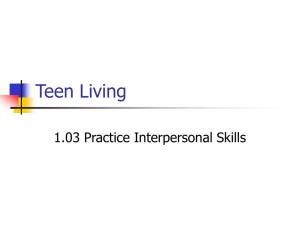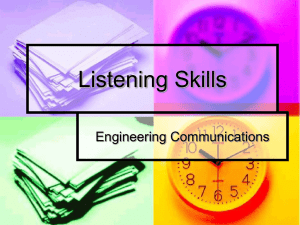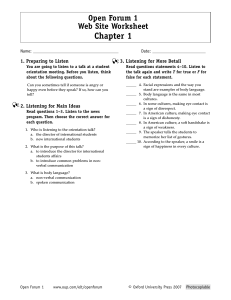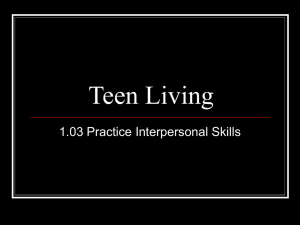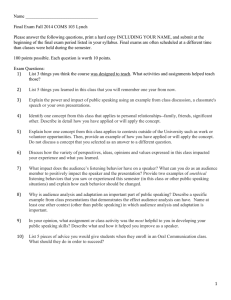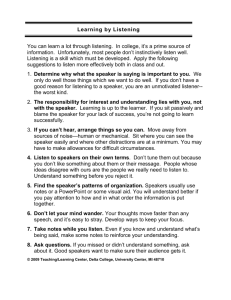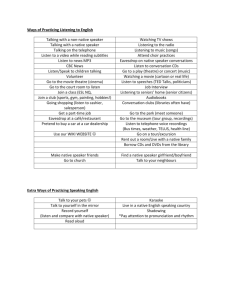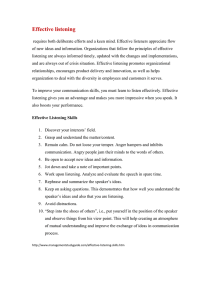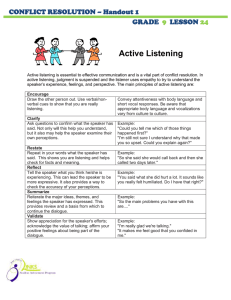3. Component 6 and additional reading
advertisement
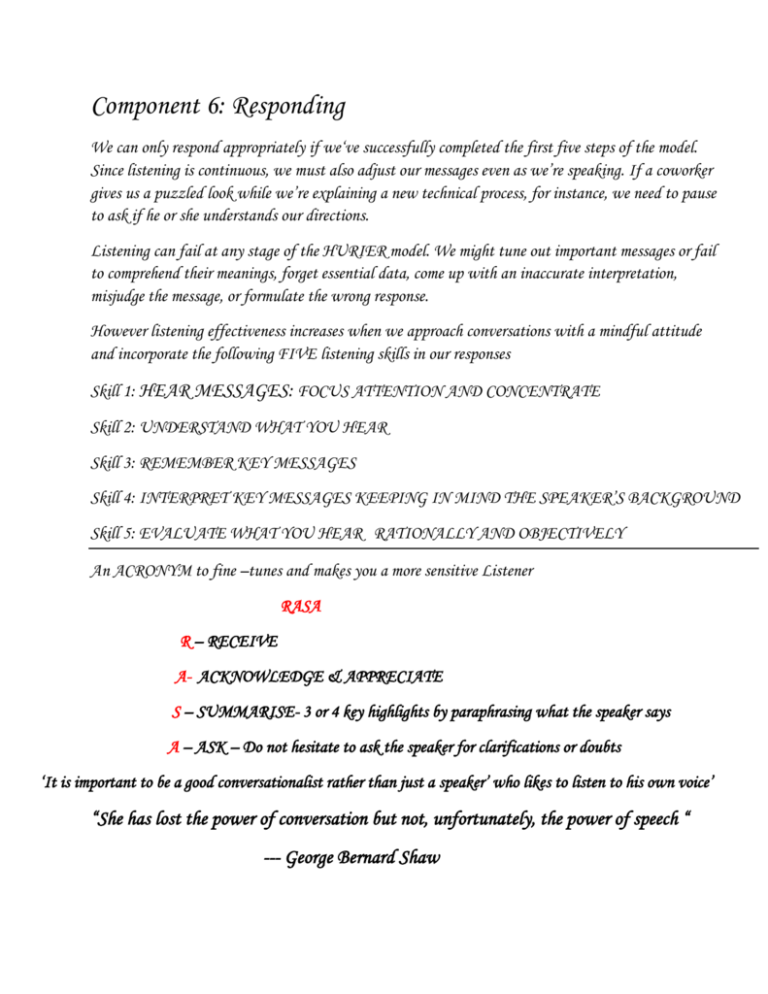
Component 6: Responding We can only respond appropriately if we‘ve successfully completed the first five steps of the model. Since listening is continuous, we must also adjust our messages even as we’re speaking. If a coworker gives us a puzzled look while we’re explaining a new technical process, for instance, we need to pause to ask if he or she understands our directions. Listening can fail at any stage of the HURIER model. We might tune out important messages or fail to comprehend their meanings, forget essential data, come up with an inaccurate interpretation, misjudge the message, or formulate the wrong response. However listening effectiveness increases when we approach conversations with a mindful attitude and incorporate the following FIVE listening skills in our responses Skill 1: HEAR MESSAGES: FOCUS ATTENTION AND CONCENTRATE Skill 2: UNDERSTAND WHAT YOU HEAR Skill 3: REMEMBER KEY MESSAGES Skill 4: INTERPRET KEY MESSAGES KEEPING IN MIND THE SPEAKER’S BACKGROUND Skill 5: EVALUATE WHAT YOU HEAR RATIONALLY AND OBJECTIVELY An ACRONYM to fine –tunes and makes you a more sensitive Listener RASA R – RECEIVE A- ACKNOWLEDGE & APPRECIATE S – SUMMARISE- 3 or 4 key highlights by paraphrasing what the speaker says A – ASK – Do not hesitate to ask the speaker for clarifications or doubts ‘It is important to be a good conversationalist rather than just a speaker’ who likes to listen to his own voice’ “She has lost the power of conversation but not, unfortunately, the power of speech “ --- George Bernard Shaw

